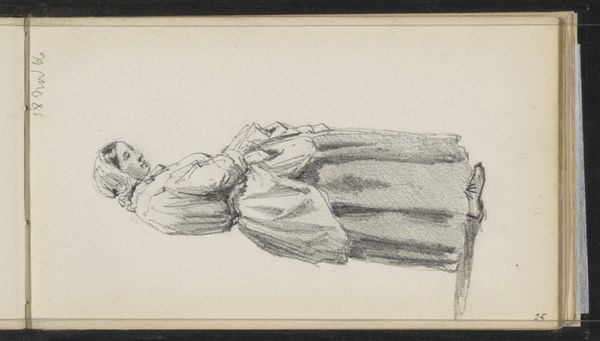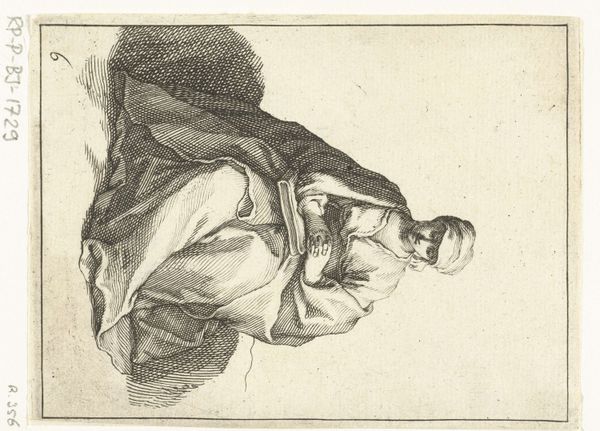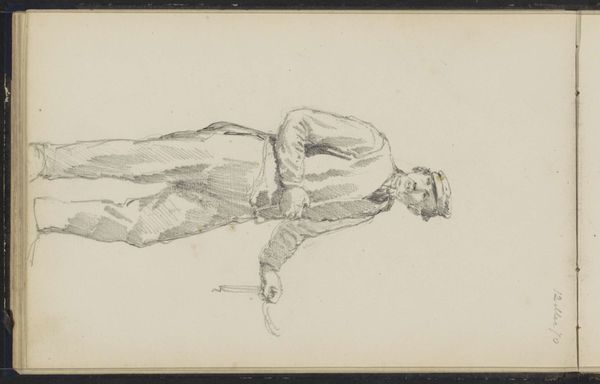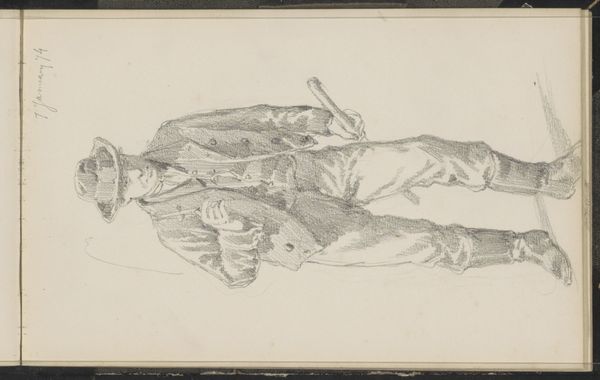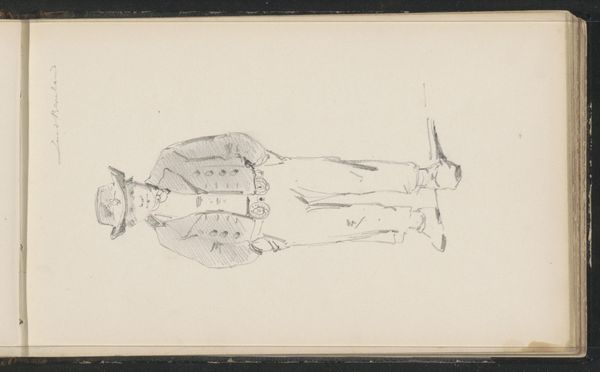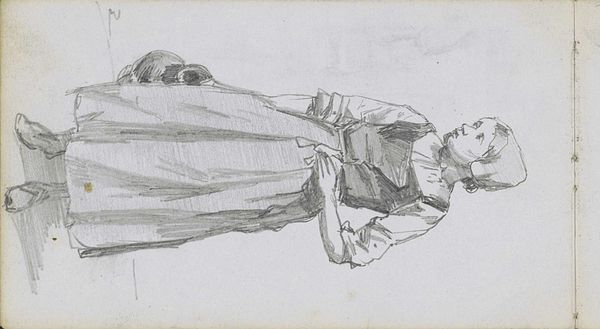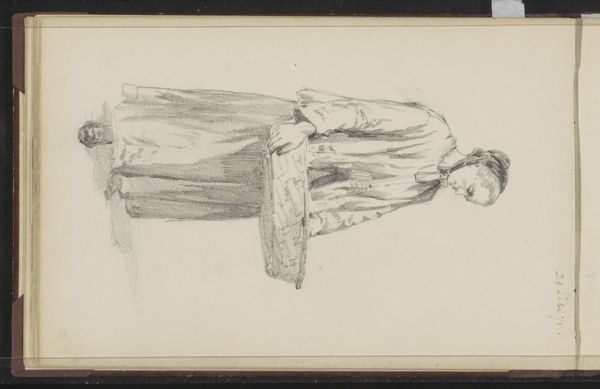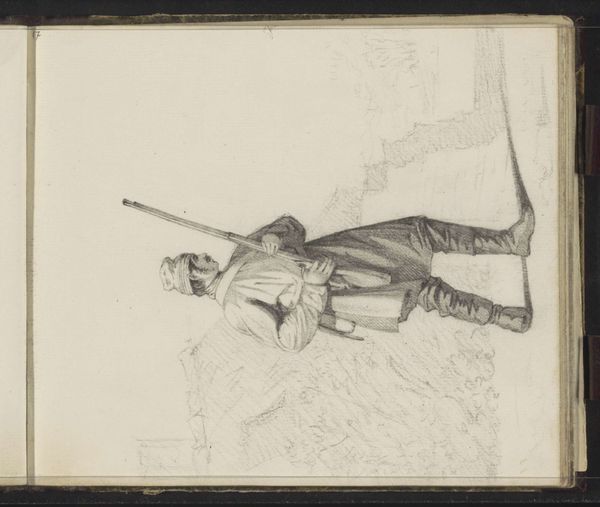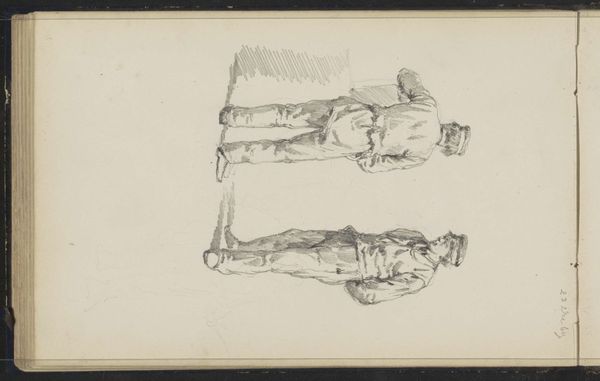
drawing, pencil
#
portrait
#
pencil drawn
#
drawing
#
pencil sketch
#
pencil
#
sketchbook drawing
#
pencil work
#
genre-painting
#
realism
Copyright: Rijks Museum: Open Domain
Editor: This is "Man die een bos sprokkelhout samenbindt," or "Man Binding a Bundle of Firewood," by Cornelis Willem (I) Hoevenaar, created sometime between 1850 and 1858. It’s a pencil drawing, and what strikes me most is how carefully the artist has rendered the details of the man's clothing in contrast to the more abstract lines of the firewood. What do you see in this piece? Curator: Well, considering this drawing through a materialist lens, it immediately prompts questions about the conditions of its making. Pencil, paper, firewood, string… all materials shaped by human labor and embedded in a specific 19th-century economy. Editor: That’s interesting. I was focused on the man himself. Curator: But look closer. The way the artist meticulously depicts the *process* of binding, the labor involved, elevates this seemingly simple task. The man’s worn clothes, the strain in his posture... It speaks to the social context of firewood gathering and the economics of survival. We need to also consider what this drawing, a relatively inexpensive medium for its time, meant in terms of accessibility and the art market. What kind of patron might have acquired a sketch like this? Editor: I hadn’t thought about it that way. So you're saying the drawing isn’t just about a man, but also about the systems that created his reality? Curator: Precisely. Even the *style*, rooted in Realism, directs our attention to the unvarnished truth of labor. What does the choice of genre painting reveal about the artist’s intentions? Was he interested in romanticizing the man’s work, or in showing it how it really was? Editor: I guess I assumed it was just a snapshot of everyday life, but I see now how much more there is to unpack when you consider the materials and context. Curator: Exactly. By looking at the means of production, the materials themselves, and the broader social picture, we move beyond surface appearances and start to understand the complex forces shaping art – and life. Editor: Thanks for highlighting those details. I am starting to see it a little differently. It feels like more than a drawing; it feels like a question about society.
Comments
No comments
Be the first to comment and join the conversation on the ultimate creative platform.
